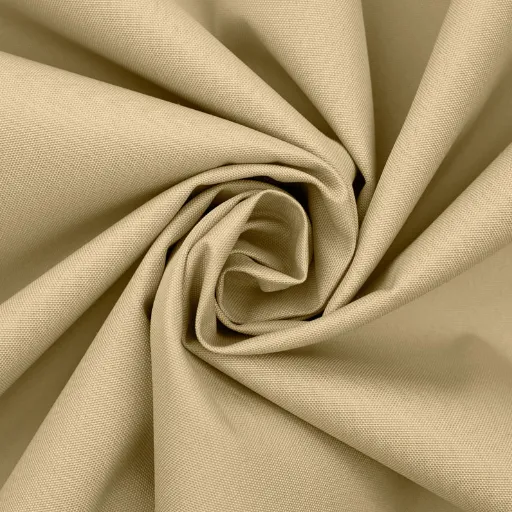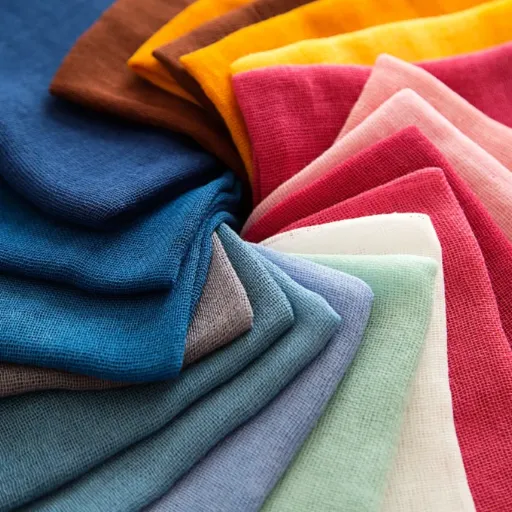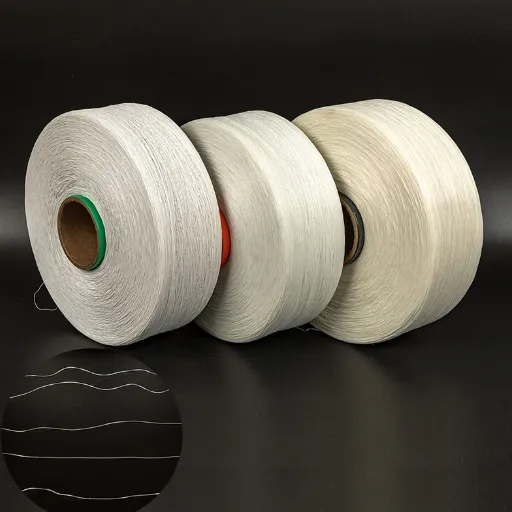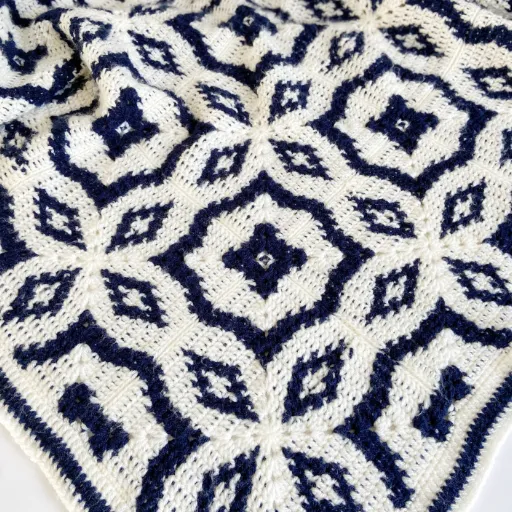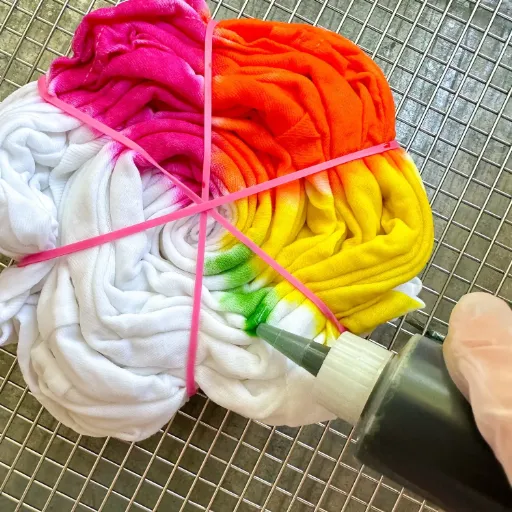Beyond a simple hobby, crocheting is a fusion of imagination, skill, and even a dash of cleverness. Every successful crochet handiwork begins with the right selection of yarn, and for crocheters who want unrivaled strength, shimmer, and flexibility, yarns made of polyester are an excellent option. In this article, I aim to provide you with the ultimate guide on picking polyester yarn for crocheting. No matter if you are making intricate patterns, practical items, or bold designs, we will look at how polyester yarn can change the game. From its marvelous advantages to guidance on picking the right one for your project, get set to turbocharge your crochet creations. Keep reading to find out how you can leverage such yarns to harness your skills and turn your dreams into reality.
What is Polyester Yarn and Why Use It for Crochet?
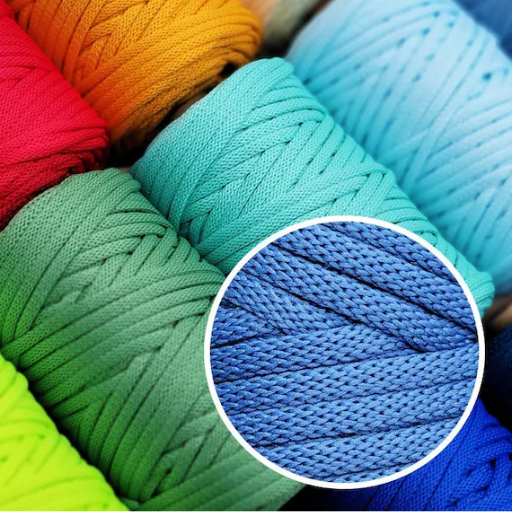
Polyester yarn is a man-made synthetic fiber which is created from polymer raw materials. It is often used in crochet for its lightweight properties. Compared to natural fibers, polyester yarn has a lower tendency to shrink or fade. These make it suitable for long lasting work. It is useful in making products such as blankets, bags, and other home decorations which are durable and require little maintenance. Moreover, polyester can mimic softness and elasticity which makes it easier for creative crocheting on a budget.
Understanding the Fiber Composition of Polyester Yarn
Apart from ethylene, polyester yarn can be made from other petrochemical substances. The calorific value of polyester yarn is admirable and undoubtedly better when compared to traditional synthetic fibers. One major process step is polymerization where ethylene glycol and terephthalic acid undergo a synthesis reaction to yield polyethylene terephthalate(PET). Once obtained, this polymer can be extruded and then spun into filaments yielding feeds for polyester yarn. Fiber molecular structure can now be changed due to innovations in textile engineering, which allow for modification such as fortifying polyester yarn’s durability, moisture-wicking, and thermal resistance properties. These changes also allow polyester yarn to be used in varied fields, such as technical textiles and fashion. Some modern yarns also incorporate recycled materials, helping reduce environmental impact while preserving mechanical integrity and performance.
Benefits of Using Polyester Yarn for Crochet
- Durability and Strength
The various crocheted items made from polyester yarn is quite durable and strong when crocheted which is a result of the yarn’s unique properties. Studies reveal that polyester fibers, aid in withstanding large amounts of mechanical strain preserving its structure even after multiple uses and washes.
- Moisture Resistance
Polyester yarn crocheted products also greatly benefit from humid conditions due to its natural tendency to wick out moisture making it more comfortable to wear. Consequently, polyethylene fabrics make for an Excellent option for crochet products which include clothing, blankets, or other accessories.
- Colorfastness
Exposure to sunlight and washing do not damage yarn’s vibrant hues which makes Polyester good for colorfastness. If crocheted items can be subjected to these processes, then yarn of this sort will be fit for visually appealing projects where its longevity is treasured.
- Ease of Care
Another advantage of polyester yarn is that crocheted items do not require much care. Due to everyday convenience, items made from polyester are often-wearing and machine washable, non-wrinkle and non-shrinkable. They also dry fast.
- Thermal Resistance
Polyester yarn has moderate resistance to heat, providing some insulation in colder regions which is why scarves, gloves, and beanies can be crocheted from it without sacrificing comfort.
Crafters are able to create wonderfully decorative and practical crochet works, meeting needs and likes by employing these advantages.
Comparison with Other Yarns like Cotton and Acrylic
|
Property |
Polyester |
Cotton |
Acrylic |
|---|---|---|---|
|
Durability |
High resistance to wear |
Moderate, prone to wear over time |
High, resilient to wear |
|
Moisture Absorption |
Low, dries quickly |
High, retains moisture significantly |
Low, dries quickly |
|
Texture |
Smooth, synthetic feel |
Soft and natural |
Soft, slightly wool-like |
|
Thermal Resistance |
Moderate, provides insulation |
Low, limited thermal properties |
Moderate, retains warmth |
|
Maintenance |
Easy to clean, less prone to stains |
Requires more care, prone to shrinkage |
Easy to clean, resistant to stains |
|
Price |
Affordable |
Can be expensive |
Affordable |
|
Environmental Impact |
Non-biodegradable, recyclable |
Biodegradable, eco-friendly options available |
Non-biodegradable |
|
Color Retention |
Excellent, vibrant colors |
Good, but fades over time |
Excellent, fade-resistant |
|
Elasticity |
Moderate, good durability |
Low, minimal elasticity |
High, stretches well |
|
UV Resistance |
High, withstands sunlight |
Moderate, fades under sunlight |
High, resists UV damage |
What Types of Polyester Yarn are Available for Crochet?
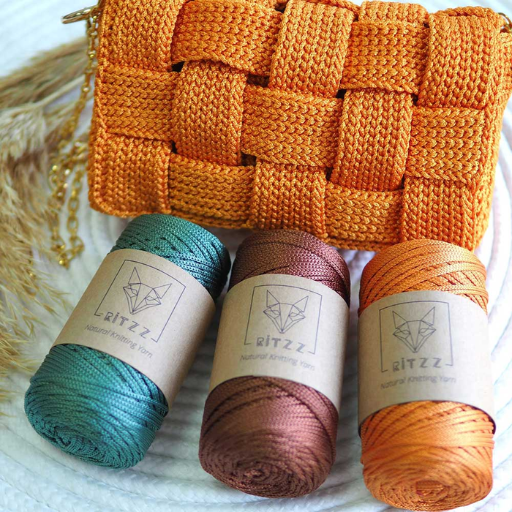
Since yarns vary in use, different types of polyester yarn suitable for crochet are textured or standard yarns. Both options include:
- Standard Polyester Yarn: These are lightweight, do not fade or lose color, as well as strong. Serving as good options for multi-purpose long term bags and decorative items.
- Textured Polyester Yarn: Enhancing elasticity, these are ideal for everyday wears, blankets or anything that may require soft touch.
- Recycled Polyester Yarn: This eco-friendly choice balances ruggedness with recyclability. It is made from post-consumer waste.
- Blended Polyester Yarn: Incorporates other fibers like cotton or acrylic into polyester to achieve softness, strength, breathability, or other specific beneficial properties.
Each type offers unique advantages based on personal preference.
Exploring Chunky and Chenille Yarn
Chunky yarn is famous for both versatility and thick texture. Due to its bulky to super bulky classification range, this type of yarn helps create easy-to-make, bold textured items such as cozy blankets, oversized scarves, and home décor pieces. Because of its generous weight, project completion is fast even for beginners. In addition, the finished items are warm and comfortable while maintaining structural durability.
The other type is Chenille yarn which is well known for its velvet like softness made with a unique process that uses short fibers aligned within a core. It is used widely for clothes, baby blankets, and elegant add-ons due to its soft velvety feel. Like all soft fabrics, these yarns need focus because their loose threads may pull and shed when worked on.
Choosing Between Multi-Color and Solid Polyester Yarn
It is important to know the characteristics, application, and uses of both solid and multi-color polyester yarn. For instance, multi-color polyester yarn is ideal for scarves and throws because it adds creativity and serves decorative purposes due to its blend of vibrant hues. This type of yarn is distinguished by its variegated patterns which add visual interest to a project without intricate stitching. Sweaters, bags, and other industrial textiles that require uniform or solid colors benefit from the simple and consistent nature of solid polyester yarn.
Both shapes of polyester yarn are well known for their strength, low-maintenance need, and resistance to stretching. Multi-color variations have an edge when it comes to aesthetic appeal for a sustainable or upcycled product whereas solid yarn literally rules where structural integrity and strict patterns are needed. While making a choice, all the details like the intended purpose of the project, style, and end-user preferences should be taken into consideration. Further, the ease of working with the two types of yarn should also be considered, especially with multi-color threads where alignment requires more care for a flawless transition from one part to another. Careful assessment of the above factors enables great results for your creativity.
Understanding Plush vs. Velvet Polyester Yarn
|
Key Point |
Plush Polyester Yarn |
Velvet Polyester Yarn |
|---|---|---|
|
Texture |
Soft and fluffy |
Smooth and luxurious |
|
Appearance |
Matte finish |
Slightly shiny or lustrous |
|
Thickness |
Typically thicker |
Typically thinner |
|
Durability |
Highly durable |
Moderate durability |
|
Stretchability |
Minimal stretch |
May offer slight stretch |
|
Ease of Handling |
Easy to work with |
Requires delicate handling |
|
Best Suited For |
Toys, blankets, and cushions |
Garments, upholstery, and décor |
|
Comfort Level |
Warm and cozy |
Soft and elegant feel |
|
Washing and Maintenance |
Machine washable |
Hand wash recommended |
|
Cost |
Generally affordable |
Can be more expensive |
How to Choose the Right Polyester Yarn for Your Crochet Project?
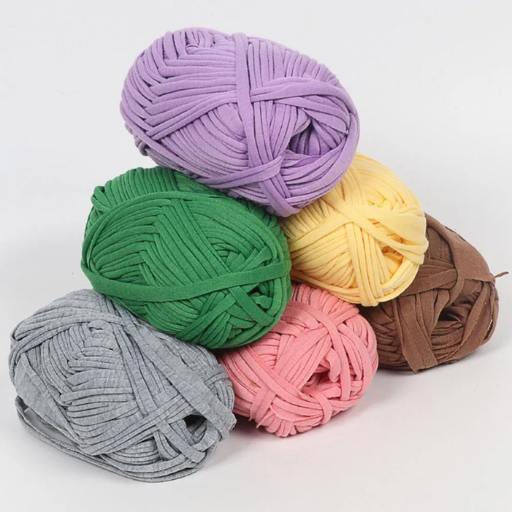
Picking the right yarn based on the composition of polyester depends on what your project requires. Keep in mind the factors listed below:
- Type of Project
For the functional items such as blankets and toys, always go for a strong, warm, and easily machine washable polyester yarn. For the decorative garments, it is better to go for a soft and elegant yarn providing the desired look.
- Texture and Comfort
Ensure that the yarn’s texture goes with your project. For cozy items, go for warm, fuzzy yarns. For something delicate and refined, choose smooth, sleek yarns.
- Ease of Maintenance
Focus on the care instructions for the finished product. For frequently stained items, choose machine-wash friendly polypropylene yarn. Items that are primarily decorative can use yarns which require hand washing only.
- Budget
Always be mindful of the budget set. Softer polyester yarns will cost more, so balance price with the required durability and appearance.
Properly matching the properties of the yarn and the project’s specifications helps achieve the best results during crochet work. Always check the label on the yarn for detailed care and suitability instructions.
Best Polyester Yarn for Specific Crochet Patterns
Focus on how the yarn’s characteristics work with the demands of the project when picking the best polyester yarn to specific crochet patterns. Below are some suggestions based on several common crochet uses and the specific properties of polyester yarns:
- Amigurumi Creations
For amigurumi, a soft and durable textured yarn such as Premier Parfait Chunky or Bernat Velvet fits best. Most importantly, polyesteryarn with tight twist resists pilling which helps because neatening intricate amigurumi designs can be difficult especially after they have been played with often.
- Blankets and Throws
Using Red Heart Hygge or Lion Brand Cozy Sherpa will result in cozy and comfy blankets. Hygge and Cozy Sherpa offer outstanding softness and warmth so are ideal for bigger projects. The final product can also be used throughout the year because of the moisture-wicking properties polyester has.
- Garments and Wearables
For wearable projects, Lion Brand Heartland and Premier Anti-Pilling Everyday Worsted are great options and lightweight polyester yarns. Both A are soft and durable so the garment is able to maintain its shape after regular washes. These products also provide vibrant colors, and therefore, look fresh for a long time.
- Rugs and Home Décor
Home décor items such as rugs can be made from heavier polyesters like Bernat Maker Big and T-Shirt Yarn. These are easier to maintain and last longer due to their strength and resistance to damage. The balance between weight and durability makes these items lasts for a long time even in rough conditions.
Make sure to consider texture and weight along with durability while picking a polyester yarn for any crochet pattern, as each choice can greatly alter the final result based on its intended use. These suggestions have proven to perform well in these categories which justifies the versatility and reliability of these yarns for multiple craft projects.
What to Look for in Quality Polyester Yarn
Yarn made from polyester has multiple uses which stem from its performance features. While selecting its yarn, some ranking factors that contribute to the quality must be maintained. Start with the yarn’s tensile strength, which affects tension as well as use breakage. Supplies such as high-strength polyester yarn is critical for items like bags and heavily used home decor pieces which need to be robust and strong. Examine also the yarn’s texture and smoothness. A good quality polyester yarn must have a uniform texture and should not have frays or irregularities because such blemishes would make handling difficult and impact the appearance of the finished product.
The second most important attribute after grade is color fastness. Quality polyester yarn should withstand washing, sunlight, and wearable stress without loss of vibrancy or change in tones ensuring aesthetic appeal for long. Focus on yarn flexibility and elasticity as well; these two characteristics greatly influence crocheting or knitting ease and the final durability of the piece. Most importantly, check for moisture resistance treatment; without it the yarn is bound to undergo shrinking, mildew, and degradation in performance for outdoor and high humidity environments. All the attributes listed above define reliable and high-grade polyester yarn useful for intensive and versatile crafting and functional needs.
Can Polyester Yarn Be Used for Different Crochet Projects?
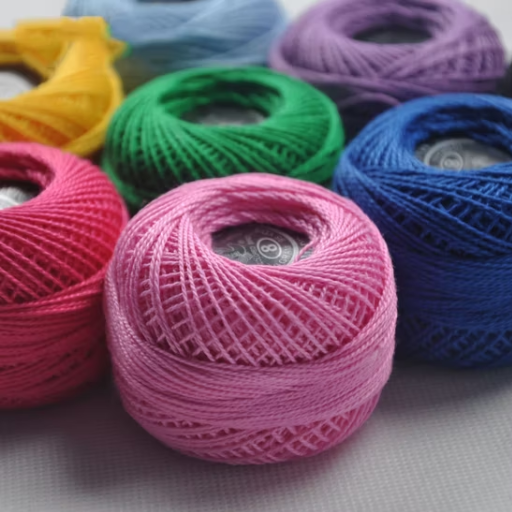
Indeed, crochet projects can benefit from the use of polyester yarn. It can withstands stretching and wicks moisture which makes it great for blankets and bags as well as accessories meant for the outdoors. Moreover, the different colors and textures of polyester yarn give it further appeal for decorative and functional pieces. Projects like baby clothing which require softness and breathability will be better served with cotton yarns or a blends.
Using Polyester Yarn for Amigurumi and Toys
Best Practices for Making Handmade Accessories with Polyester Yarn
- Select the Appropriate Yarn Weight
Polyester yarn can be purchased with varying weights from light to bulky. With respect to scarves, bags, or jewelry, lightweight and bulky options can be used, provided the weight chosen meets the desired texture and durability goals. For intricate and light accessory pieces, fingering and sport weight yarns work best. For larger accessories, those require sturdy materials, worsted and bulky yarns will do.
- Test for Stretch and Tension
Polyester yarn has slight elasticity that affects the tension of the stitches in more structured work. Conducting a gauge swatch reduces risk stretch or warp distortion during use.
- Use the Correct Crochet Hook or Knitting Needle Size
As with any other polyester, its smooth surface and stretchy nature requires proper tools to be chosen for optimum stitch definition. A needle or hook perfectly sized to the yarn will not split stitches and will also evenly tension the stitches. Most producers provide recommended hook and needle sizes on yarn labels which can be used as a baseline for further customization.
- Strengthen Structural Integrity with Reinforcements
Add linings, interfacing, or extra stitches to high-wear areas like seams along the side of the tote bag or headbands to improve the item’s handmade quality. These reinforcements improve durability, thereby enhancing the handmade item’s lifespan.
Following suggested practices allows maximize efficiency and versatility of the polyester yarn enabling creation of stunning and long lasting handmade accessories.
How to Care for Your Polyester Yarn Crochet Creations?
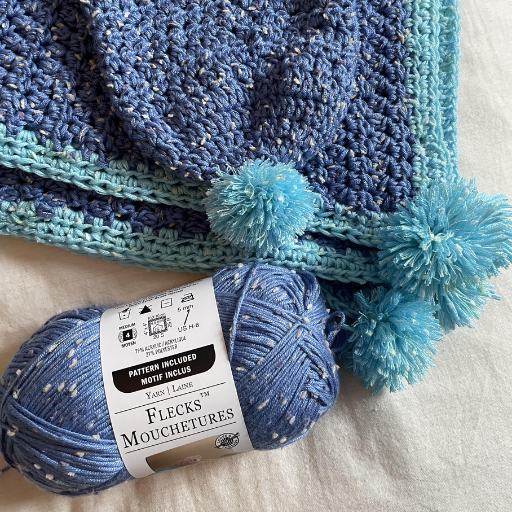
Following these steps guarantees the look, wear, and tear longevity of crochet pieces made of polyester yarn:
- Washing
Most creations made from polyester yarn are safe to wash in the machine on a gentle cycle with cold or warm water and require a mild detergent.
- Drying
Avoid using a dryer as it can wear down the item and cause shrinkage. If absolutely necessary, use the delicate setting or low-heat options only.
- Storage
Keep items out of direct sunlight to avoid fading or degradation of the material, storing them in cool temperatures will help maintain the quality further.
- Handling Stains
Use prompt treatments like washing the area with a mild spot cleaner or washing gently by hand to avoid losing luster and discolored stains.
Following these steps will allow your crochet creations made with polyester yarn to maintain their favorable appearance and functionality throughout their use.
Washing and Maintenance Tips for Polyester Yarn
- Washing Temperature
You should only machine wash polyester yarnworks in cold to lukewarm water, preferably between 85°F (29°C) and 105°F (40°C). These temperatures are too low for weakening or stretching fibers. Using the gentle or delicate washing cycles is recommended because it minimizes problems caused by vigorous movement. Excessive force is damaging to the structure of your crochet work.
- Detergent Selection
Bleach or overly abrasive detergents can weaken polyester fibers so always choose a mild, non-abrasive detergent tailored towards synthetic fabric. Such detergents are specifically designed to maintain the integrity and color foil of the fabric. Look for fabrics free of added dyes and perfumes.
- Drying Guidelines
It is also best to air dry yarn, as this helps maintain texture as well as maintain elasticity. To further prevent warping, one can lay it on a clean towel and reshape it. If necessary, yarn can be tumble-dried on a low setting.
- Ironing Precautions
Excessive heat can damages polyester, so avoid ironing unless absolutely necessary. Should you need to use a hot iron, keep it at the lowest possible setting for synthetic materials. Protecting the crochet piece with a damp cloth will help shield it from heat damage while still ensuring safe steaming.
- Pilling Prevention
Polyester yarn projects may develop surface pilling due to friction exposure. To avoid pilling, minimize rubbing against rough surfaces. If pilling occurs, the surface can be gently restored using a fabric shaver or pill remover.
Following the highlighted maintenance practices outlined above allows you to maintain the durability, functionality, and aesthetics of your polyester yarn crochet projects for years to come.
Reference Sources
-
Polyester yarn is a popular choice for a wide range of knit and crochet projects – Discusses the properties and applications of polyester yarn in knitting and crochet.
-
Serviceability and washing durability of recycled polyester – A study on the durability and serviceability of recycled polyester.
-
Influence of Yarn and Fabric Properties on Mechanical Performance – Explores how yarn and fabric properties affect mechanical performance.
-
Effect of cotton-polyester composite yarn on the physico-mechanical properties – Examines the impact of cotton-polyester blends on physical and mechanical properties.
-
Polyester | Materials Index – Provides an overview of polyester as a material.
Frequently Asked Questions (FAQs)
Q: What are the benefits of using polyester yarn for crochet projects?
A: Polyester yarn is durable and resistant to wear and tear, making it a high-quality choice for various crochet projects. It is also lightweight, which is perfect for crafting items like bags and blankets. Additionally, polyester is a synthetic fiber, so it’s less likely to cause allergic reactions compared to natural fibers like wool.
Q: Can I use polyester yarn for knitting as well?
A: Yes, polyester yarn is versatile and can be used for both crochet and knitting projects. It works well for creating items such as sweaters and accessories. Its strength and durability make it an excellent choice for yarn for knitting.
Q: How does polyester yarn compare to acrylic yarn?
A: While both polyester and acrylic yarn are synthetic fibers, polyester tends to be more durable and has a softer feel. Acrylic yarn is often more affordable but can be less sturdy than polyester. Both can be used to make crochet accessories, but polyester may offer a more premium finish.
Q: Is polyester yarn suitable for baby items?
A: Yes, polyester yarn is a safe option for baby items, as it is less likely to irritate sensitive skin. However, make sure to choose high-quality polyester that is soft and free from harmful chemicals, making it perfect for baby blankets and toys like dolls.
Q: What colors are available in polyester yarn?
A: Polyester yarn comes in a wide range of colors, allowing for an array of creative options in your projects. You can find multi-colored balls or solid colors, making it easy to match the yarn with your desired project, whether it’s a basket or a sweater.
Q: How do I care for items made with polyester yarn?
A: Items made from polyester yarn are generally easy to care for. Most can be machine washed and dried, but it’s always best to check the manufacturer’s recommendations. This makes polyester a practical choice for durable fabrics like t-shirt fabric yarn.
Q: Can I use polyester yarn for outdoor projects?
A: Absolutely! Polyester yarn is resistant to UV rays and moisture, making it suitable for outdoor projects. Items like crochet bags and accessories made from polyester will hold up well against the elements, ensuring sturdiness and longevity.
Q: What should I consider when choosing polyester yarn for my project?
A: When selecting polyester yarn, consider the weight and thickness, which will affect the drape and texture of your project. Additionally, check if the yarn is labeled as high-quality to ensure it meets your expectations for softness and durability.
Q: Is there a difference between polyester yarn and plastic yarn?
A: Yes, while both are synthetic, polyester yarn is typically made from high-quality fibers that provide better softness and durability. Plastic yarn is often made from recycled materials and may not have the same feel or performance as premium polyester yarn.









